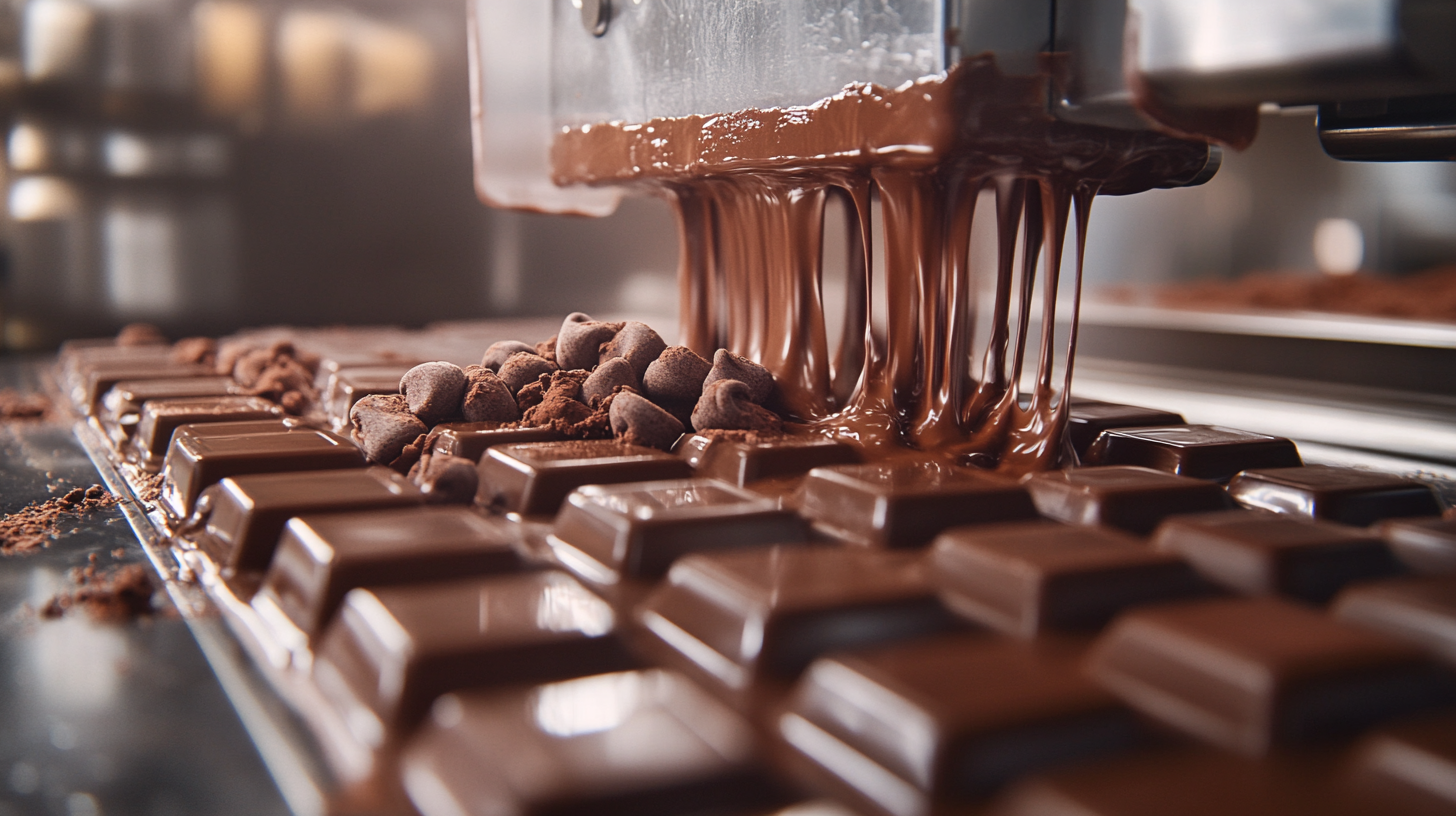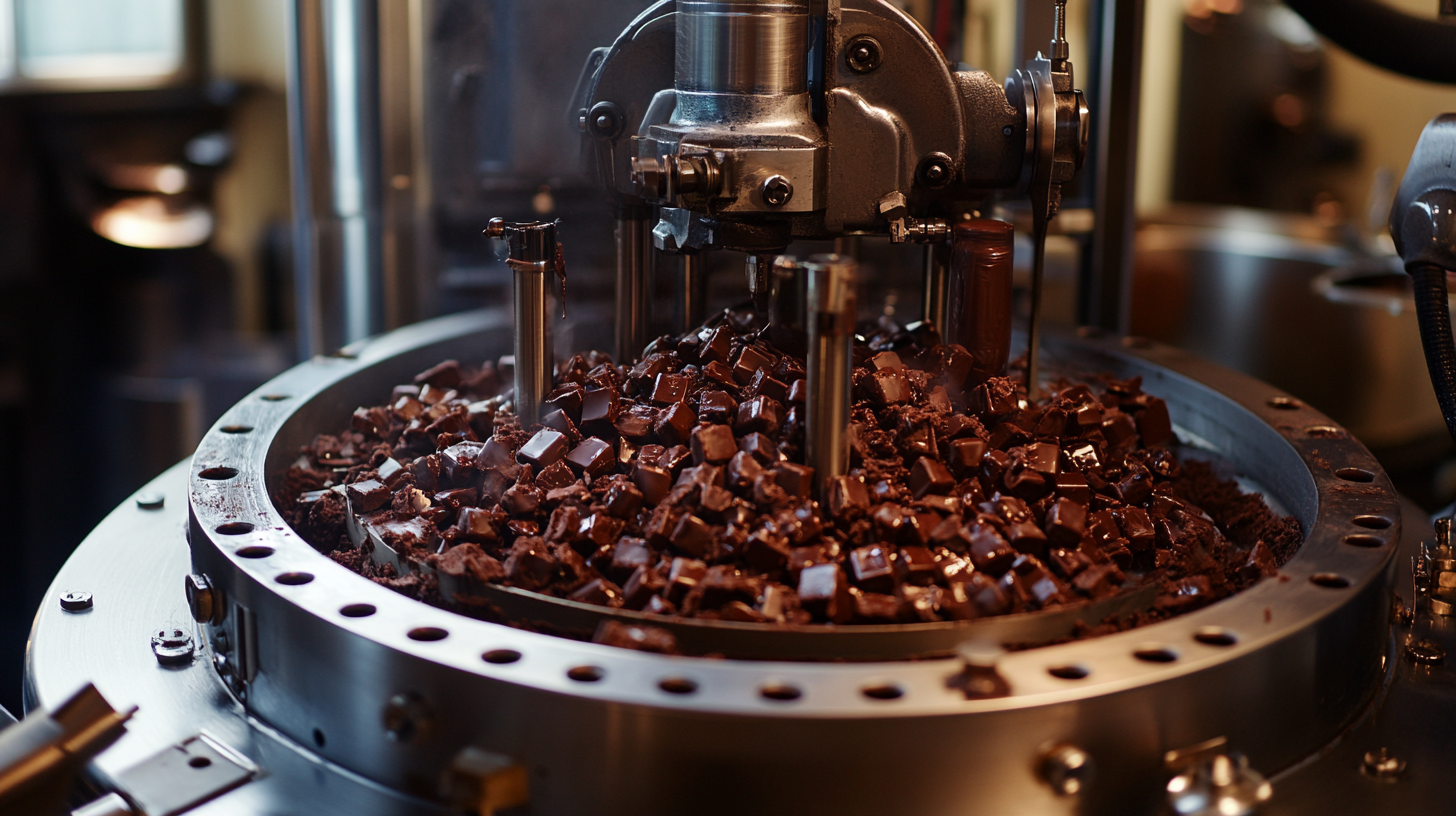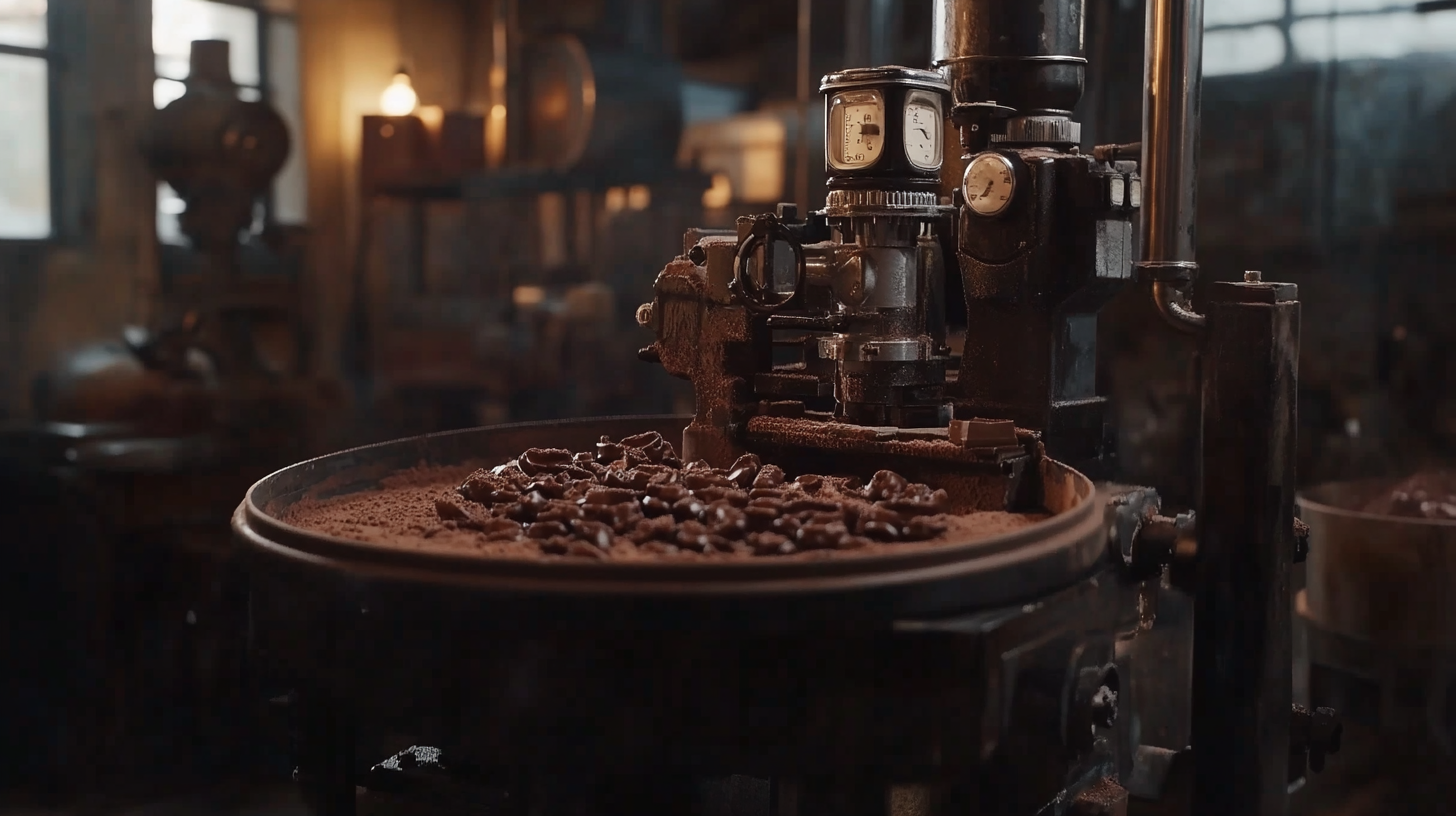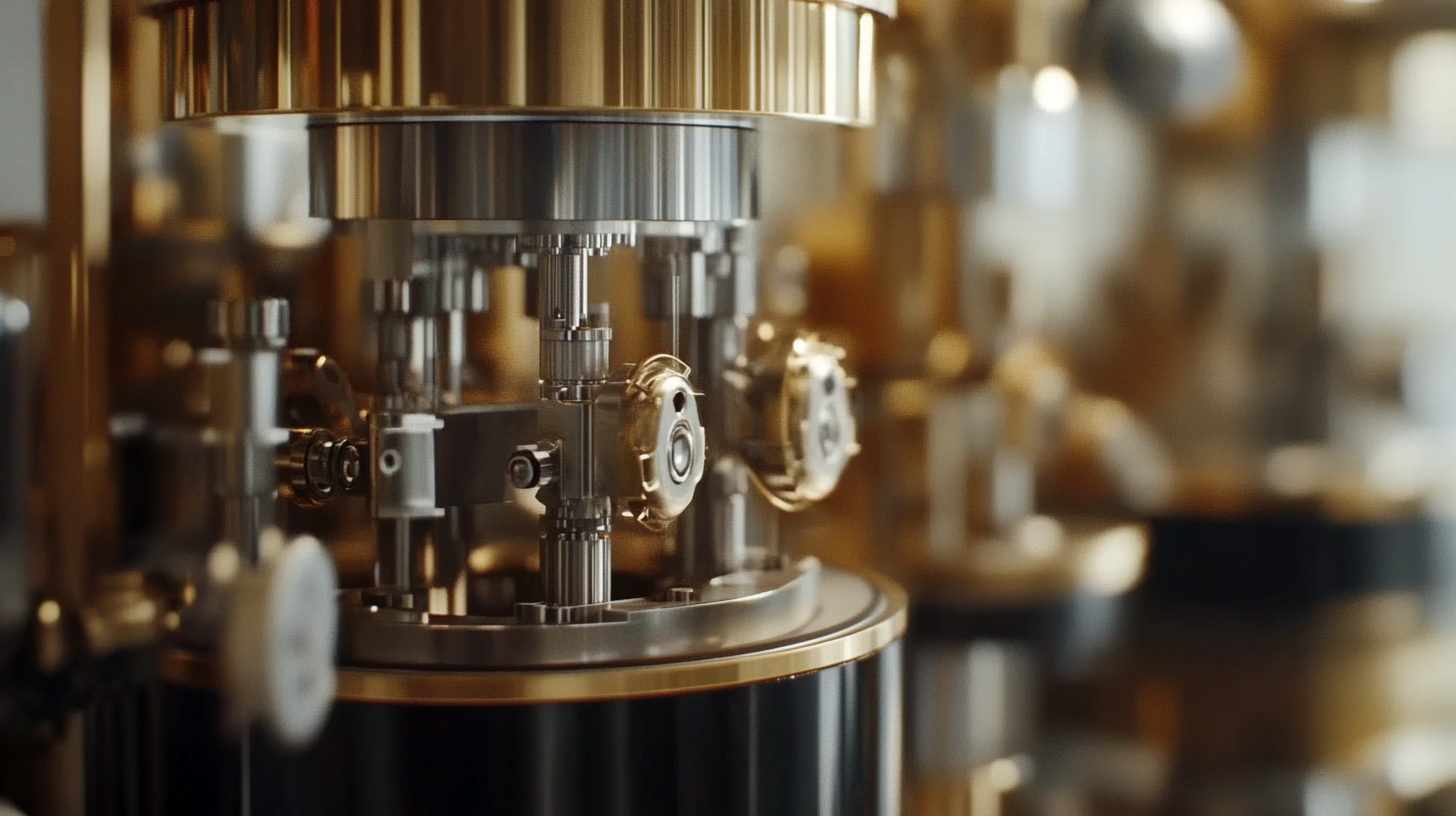Chocolatier. This is everywhere within the confectionery art. The center of happiness for any delight is definitely here within this crucial piece of equipment-the macchina del cioccolato. Using this machine, you can convert very easily raw cocoa beans into the richest, silkiest chocolate creations. You may be a professional chocolatier or a well-established home maker who would like to make gourmet treats; the essence of the chocolate-making machine and its intricate technical specification needs awareness if you want to make chocolate creations of perfect texture, flavor, and consistency.
As we go deep into the inside of the macchina del cioccolato, we shall know more about its components, purpose, and the innovations in elevating chocolate production. The precise temperature control into the grinding and refining processes - all these aspects play a significant role for the engineered high-quality chocolates. Then let us embark on the journey of revealing the secrets which make these machines indispensable in both the artisanal and industrial landscapes and how their specifications could greatly improve the realization of chocolate artistry.

Chocolate-making machines are the heart and blood in the process of evolution in chocolate production. It is also essential in itself to define components that most of the machines would normally and usually have to every individual interested in the art and science of chocolate making. Conching system is one of the most critical parts of a chocolate making machine. Continuous mixing and aeration of the mass chocolate results in a desirable texture and flavor. The conching machine comes in several sizes and capacities, which can suit even smaller "One man shows" all the way through to the huge-concern manufacturers. Furthermore, it refines cocoa particles, reduces humidity thus providing smoother mouthfeel and richness of taste. The tempering unit is another vital component of a chocolate making machine. This is where the chocolate temperature is controlled so that the desired snap and shine can be achieved. Proper tempering conditions enable cocoa butter to crystallize in stable form, permitting glossy finish and preventing the chocolate bloom from occurring. Different molding and cooling lines conclude the whole process by giving the last shape and solidifying chocolate in bars and sophisticated forms. Each of these features makes essential contributions towards the final chocolate product by taking raw materials to be used into consideration to create the delicacy for everyone in the world to have at some point in their lives. Knowing how they work marketing this product also makes it easier for manufacturers but increases the chocolate-tasting experience for consumers.

Industry standards are prioritized to bring standardization for good products in chocolate manufacturing. Knowledge of certain quality parameters makes a big difference between a low-quality product and a high-quality one. The raw materials selection, namely cocoa beans, sugar, and emulsifiers, is a critical step in the chocolate-processing world since they all have rigorous quality-control specifications that should be followed to assure consistency and flavor integrity.
The workplace must also guarantee temperature and humidity control throughout production and storage. Chocolate cannot withstand environmental fluctuations. Such may lead to either bloom or texture inconsistency problems. The grinding and conching of chocolate production also require careful observation as they will substantially affect the particle size and the flavor profile of the final product. All these technical specifications enhance the smooth mouthfeel and yet intensely flavored taste expected by a meticulous consumer.
Food safety legislation adds another layer of elaboration to the assurance of quality in chocolate-making. By testing for contaminants and ethically sourcing all ingredients, the chocolate manufacturer protects the health of the consumer and builds the image of the brand. By mastering such industry standards and quality parameters, chocolatiers will surely unlock the secret of making a product that gives them an upper hand in this very competitive marketplace.

The recent tech innovations in the chocolate industry have forged changes, especially in the field of automation. As elucidated by the International Labour Organization, the advancements in technology, automation, and artificial intelligence are only disproving the employability factor, thereby also affecting the distribution of wealth in all of its diversions, including the one for the chocolate itself. The report published by Mordor Intelligence shows that the global chocolate market is in the upper fingers of 4.2% CAGR between 2021 and 2026, and in helping meet that demand by automation efforts silently and effectively.
Automation trends in processes concerning chocolate are not only productivity-bound but introduce greater reproducibility and dependability in the production of chocolate products. A study, carried out by the Food Automation Network, shows the percentage of reduction of production errors by automated systems to be about 30%, which leads to enhanced product quality. High-tech chocolate-making machines are equipped to monitor in real time the ingredient ratio, the mixing time, and timely conduct of the tempering process, to ensure that every batch is produced under stringent quality control.
Developing flavors and sourcing ingredients for chocolate manufacture, among other things, is being revolutionized by artificial intelligence. With the capability of AI algorithms to tap onto consumer preferences and market trends, manufacturers can develop unique products that respond to evolving consumer preferences. The AI in food and beverage market is poised to be around $1.2 billion by 2024, as per a report by MarketsandMarkets, thereby suggesting a great deal of potential for an intelligence-driven production processes paradigm shift. While pursuing these technological advancements, chocolate manufacturers will increase their operational efficiency and find their way through a complex landscape formed by automation and changing consumer demands.

When it comes to chocolate production, it is important to select the appropriate method that not only affects the quality of the end product but also that of the process through which the product is made. Two major chocolate production methods present themselves; batch chocolate production and continuous chocolate production. Each of this has its distinct advantages and challenges making both conditions suitable for very different production needs.
Batch production allows manufacturers to produce small quantity chocolates under control settings. This production process is very well used by artisans chocolatiers or brands that are into very unique and seasonal flavors. Batch production provides the flexibility chocolatiers need to freely experiment more often to end up making quality handcrafted products desirable to the consumer who seeks gourmet chocolate experience. The flip side to this would be increased downtime during batch runs and a slower overall rate of production which might not suffice larger markets.
In contrast, continuous production of chocolate will maximize efficiency and output in the manufacturing dimension of chocolate making. Continuous production systems keep materials flowing and minimize manual intervention, permitting a more homogenous texture and taste of the chocolate. But again, this is one method that involves a huge initial capital investment and high operational complexity, which may not be easily accessed by small companies or single independent manufacture.
Such a choice must be made according to several elements: product quality, volume of production, and market definition. Understanding these two approaches in respect to chocolate production allows manufacturers to tailor operations closer to the goals and execution of delivering the finest possible chocolate in the market to consumers.
Energy efficiency proves to be the point of interest in the manufacture of chocolate products by companies with intentions to minimize operational cost while on the quality side of production. The introduction and utilization of properly defined parameters and methods increase the degree of energy efficiency in the entire chocolate-making process. In addition to being very friendly to the environment, it will sharpen the competitive edge against the majority of players in the over-saturated market.
To implement, it is the use of modern machines that incorporate technologically advanced energy-saving features. From the design of modern chocolate making machines, they tend to facilitate energy consumption but do not compromise output. Most of those machines have programmable features with which production parameter settings can be fixed to reduce waste and energy usage. Besides, systems can continuously monitor energy consumption and provide real-time data, which enable manufacturers to see improvement areas within the production process.
Also, adopting such sustainable practices as optimizing consumption of raw materials and recycling by-products can save a huge amount of energy. For example, using cocoa by-products in other processes will lead us to use less waste and give us a lower total footprint in energy for cocoa chocolate production. With the trend that consumers are strongly attached to sustainability, energy-efficient companies will generally increase their operational performance and their brand image in the market.
Utilizziamo i cookie per migliorare l'esperienza utente. Per maggiori informazioni, consulta la nostra Cookie Policy.